Contact
- Rye Art Gallery
107 High Street, Rye
East Sussex. TN31 7JE - 01797 222433
- ryeartgallery@gmail.com
Danny Pockets
Everlast - A Retrospective - 25th March - 8 May 2022
Danny Pockets (Cuming) has been an interesting presence these past few months throughout Rye Art Gallery and in one’s psyche occupying strange and familiar spaces, conversations, sweet wrappers blowing in from the street and the unfamiliar young sounds of ‘ out of lockdown’ visitors. From the first flits of research, reading artists bios, obituaries to visiting his omnipresent studio and the family home. There was a forensic sense about viewing his work and one which has been surprising revelatory.
We came across many recurring themes that have been highlighted previously but perhaps because this is a unique show, one in which Danny isn’t physically present, a gap has occurred. A retrospective in the art world is usually a comprehensive survey of an artist’s work, usually including dare I say it, their greatest hits? I strangely start this foreword by starting at the end, in the position of asking what would Danny be producing today?
I ponder the word ‘producer’ because that is a good description, a person who initiates, coordinates, supervises and manages the creative output. Many have described Danny with these very adjectives, from his teaching, staging events, creating music to what we are most familiar with his paintings or combines. I use or steal the word combines as it’s what Robert Rauschenberg made iconic and Danny elaborated and moulded into his own; hybrids between painting and sculpture.
So now approaching the elephant in the room and asking where would Danny be taking us now? It’s a hard question but isn’t that what art should be about and so shouldn’t we be approaching it in such a way? The trajectory of his career is a familiar story of a boy yearning for the capital, predominantly for musical motivations. Danny recalls the time when David Bowie filmed Ashes to Ashes at Pett Level whereas Danny reminisced, “the world trembled across Romney Marsh, but he may as well have recorded the whole thing in our school grounds”. From Kent to Chelsea Art School, which left Danny frustratingly so disappointed that he left the course early, and busied himself with Royal Academy submissions. He eventually found another course at City and Guilds, London School of Art and continued his career with youthful vigour, left leanings and his beloved music as his backdrop.
‘The Houses of Holy’ series date from 2005 – 2018 are mainly dedications to lost music venues, important because of the music history they represent, for many it wasn’t just the place they first saw their favourite bands. It was where they would congregate outside and hang out elatedly afterwards the air cooling all the heated bodies on mass. The venues don’t just represent a bygone era, they explore gaps and spaces of the unsaid but we are viewing them through the anachronistic lens of the present. So, what is this contrast that Pockets has presented us with? The common thread through his work is defamiliarization so if we think we are spectators in the comfortable zone of the familiar, think or look again. Take Lenin and Friend (89) It is familiar from first glance, but only through the blurred lens of the famous leader’s crumpled silhouette. The juxtaposition of the armless mannequin shakes up our expectations of the familiar, creating conversations of the opposite. He uses many motifs in ‘The Houses of Holy’ series from the familiar structures of the buildings, the famous logos and typography to the discarded packages, magazine and spray-painted black lace overlays (the unfamiliar). These are the gaps and fault lines that Danny is exploring creating an interplay with history or a re-examination.
We come to our present time and again the question of what would Danny be producing today rears its head, if we survey his preoccupations such as psychogeography, the movement of people within culture and spaces we come to liminality. If we remember his interdisciplinary approach incorporating film, music, events, with discord, disruption and obstructing the norm. We know he would be well placed today and his creativity would have been unlimited and so it is to this liminal space we must go, where we look, ponder, wonder and imagine what would have been produced.
This exhibition wouldn’t have been possible without the continued support and advice of the Cuming family; thank you, Sarah, Rachel and Fred for all your guidance, help, patience and generosity.
Louise Simkiss-Day
Rye Art Gallery trustee — RA Representative Partnerships & Projects
All enquiries : ryeartgallery@gmail.com
or telephone: 01797 222433
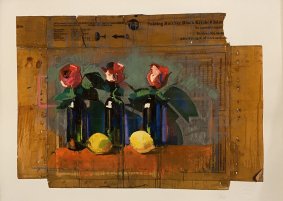
Still Life With Lemons, pigment print on Hahnemühle German Etching paper, created in 2022 to celebrate 65 years of Rye Art Gallery, framed watermarked print - £1,350
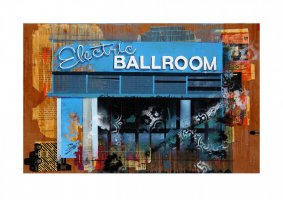
Electric Ballroom, limited edition print signed by the artist, framed - £550
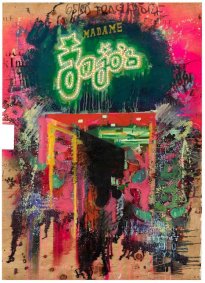
Madame Jojo's, limited edition print signed by the artist, framed - £550 NOW SOLD
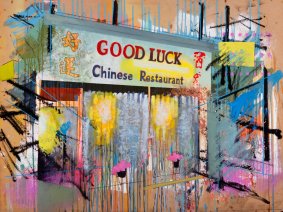
Good Luck 3/50, limited edition print signed by the artist, framed - £600 NOW SOLD
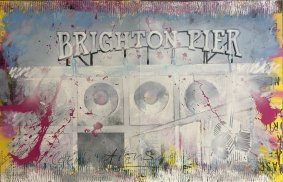
Sea Front, Brighton, 4/250, limited edition print signed by the artist, framed - £800
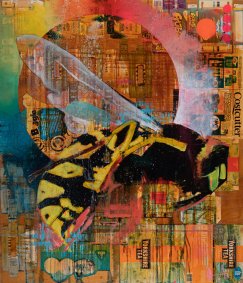
Wasp, 2016, 2/50, limited edition print signed by the artist, framed - £650
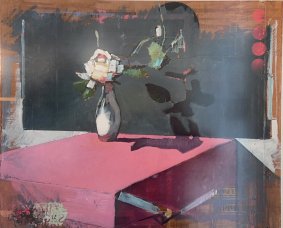
Pink Still Life, limited edition print signed by the artist, dated 2017, framed - £395 NOW SOLD
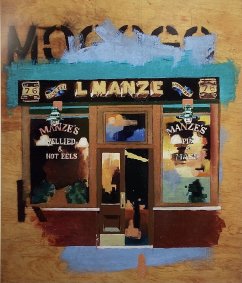
L. Manze, Walthamstow, limited edition print, framed - £175
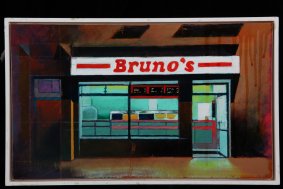
Bruno's, 2/50, limited edition print signed by the artist, framed - £295 NOW SOLD
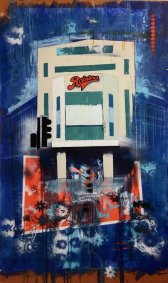
Rainbow, 1/50, limited edition watermarked print, framed - £650
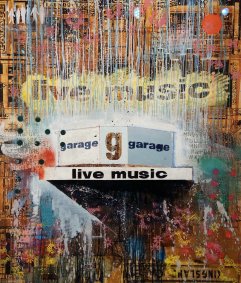
Garage (Live Music), 1/50, limited edition large watermarked print, framed - £650
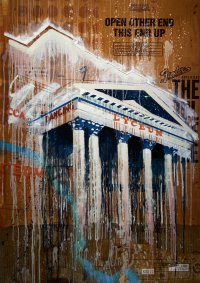
Lyceum, 2/50, limited edition watermarked print, framed - £650
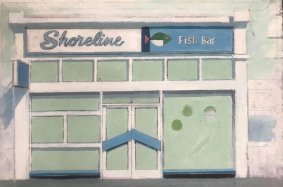
Shoreline, limited edition print, framed - £175
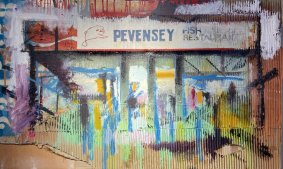
Pevensey, Fish Restaurant, mixed media - £4,500

Zephyr, mixed media - £3,250
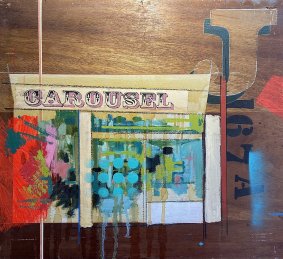
Carousel, mixed media - £2,000

Fat Sue's, diptych, mixed media on canvas - £4,500
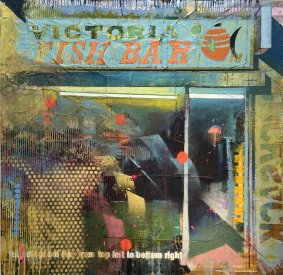
Victoria, Fish Bar, mixed media - £4,500
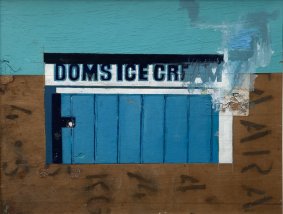
Dom's Ice Cream, mixed media - £1.500
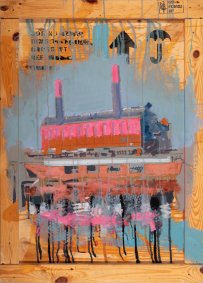
Battersea Power Station, mixed media on wooden pallette - £2,750
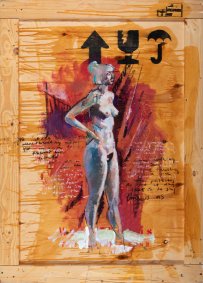
Nude Lyrics, mixed media on wooden pallette - £2,750
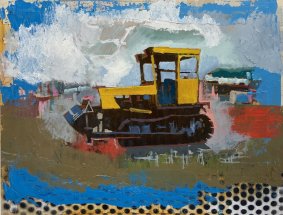
Bull Dozer, mixed media - £2,000
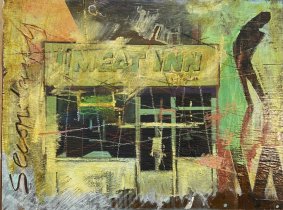
Meat Inn, mixed media - £2,000

Judy, mixed media - £2,750
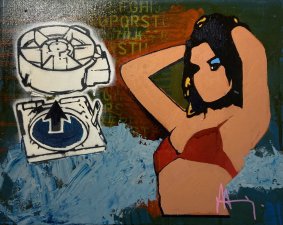
Sexy Alphabet, mixed media on panel - £3,000
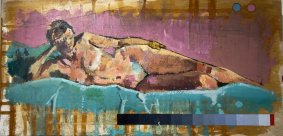
Reclining Nude, mixed media - £2,000

Brixton Academy, 1/50, watermarked print - £600






